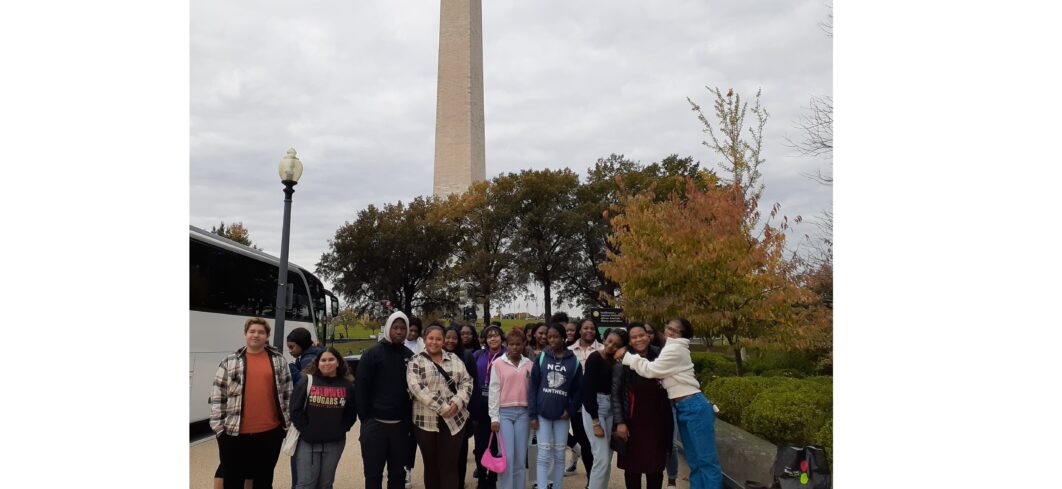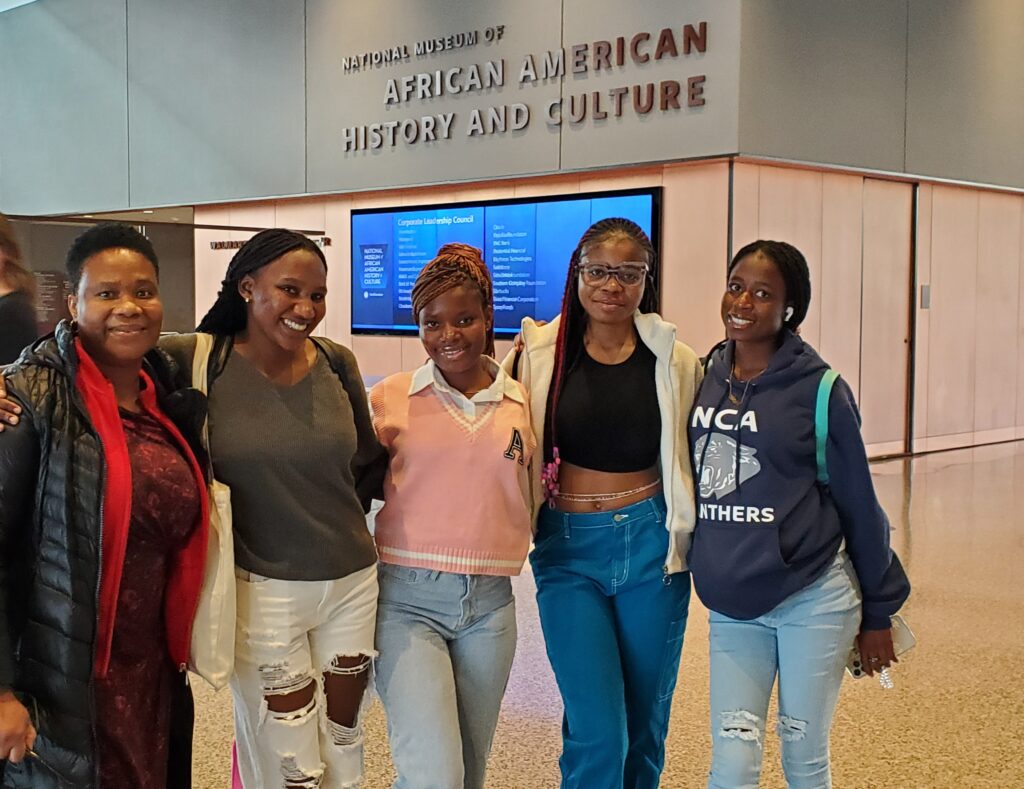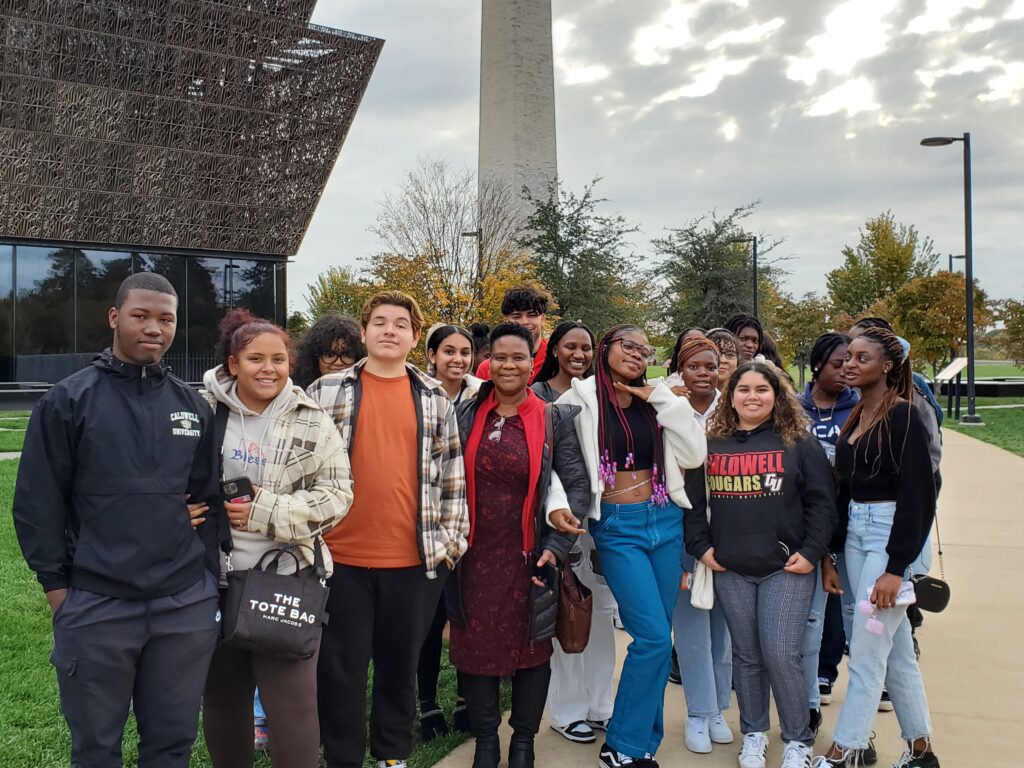Caldwell University
October 31, 2022
EOF Trip to Smithsonian National Museum of African American History and Culture

On a recent trip to the Smithsonian National Museum of African American History and Culture, student Bella Arce was most impacted by seeing Emmett Till’s casket. It was “really moving,” moving in a way that a teacher or person who taught about it cannot show you, said Arce. She was referring to the exhibition about Till, the 14-year-old boy from Chicago, who was murdered in 1955 for whistling at a white woman while visiting relatives in Mississippi. His mother’s insistence that his body be displayed in a visible casket for the public to see the horror and injustice, spurred an international outcry in the early years of the modern civil rights movement.
Arce was also impacted by seeing another exhibit with shackles used on enslaved children. “[They] had me in shock. I didn’t say anything.” There were many other numbing and heart wrenching moments on the excursion to the museum in Washington Oct. 28 which was sponsored by the Educational Opportunity Fund Office (EOF). There were also displays and presentations which evoked emotions of joy over culture, celebrations, achievements and accomplishments. Criminal Justice major Day’zah Grinnard said her favorite part was the exhibitions of fashion and music.

The museum is described on its website as “A People’s Journey, A Nation’s Story” and is “the only national museum devoted exclusively to the documentation of African American life, history, and culture…to date, the Museum has collected more than 40,000 artifacts.”
Director of EOF Andrei St. Felix said she wanted to host the trip since the museum provides an opportunity to teach through pictures and words. Some students, said St. Felix, were in tears at witnessing the struggle and inhumane way Blacks were treated with “no respect or regard for the human being.”
“For many students, including me,” said St. Felix, “we put ourselves in our descendants’ positions. It was very emotional to be in a place that shows the dark history of our ancestors.”
Students Pearlene Geraldo and Lilli Antwi are from Ghana. They spoke of the how educational the museum was for them and of seeing the exhibit of Elmina Castle in Ghana, a slave trading post, and the Door of No Return, where slaves passed through to get on the slave ships. Geraldo remembers seeing the actual spot, the gates, the Door of No Return in her homeland. “My father took me there,” she said.

The students were very happy that they signed up to go to the museum to discover and learn more about history. “It is definitely” important to “travel around the world” and see things first-hand, said freshman Johnny Reyes.
St. Felix said she “saw strength and courage in the middle of suffering” and she believed the students experienced that too. “Why were they [the enslaved] able to live? Not because they wanted to but because they had to, for the generation to come…they endured because they had a bigger purpose to know what freedom was, to live free the way God created them to be.”





